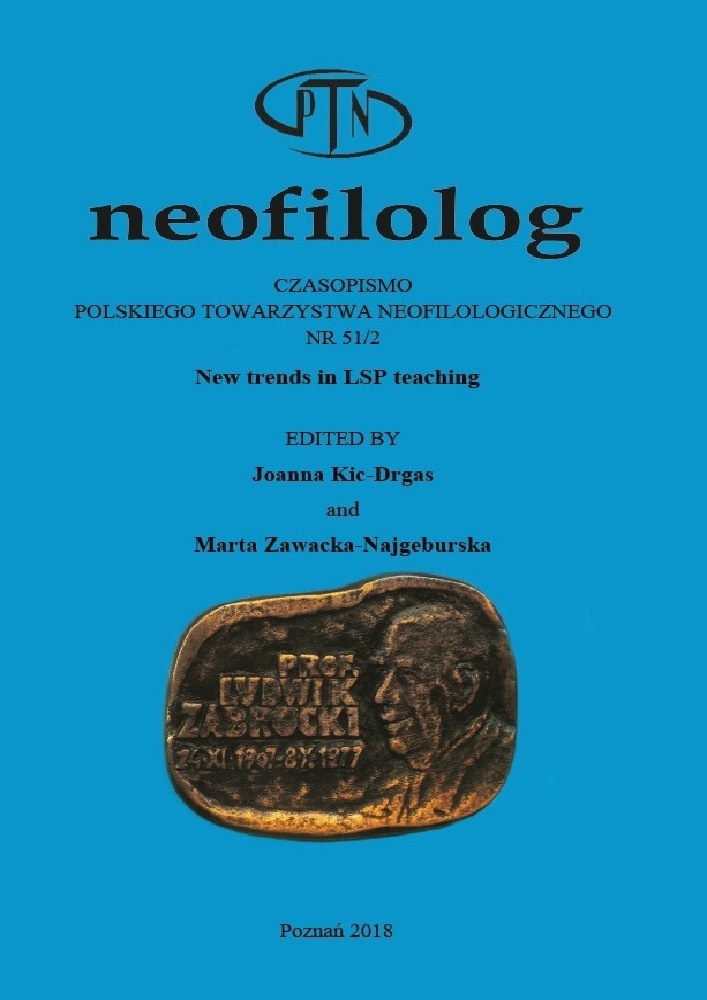Abstract
The use of independent and integrated speaking tasks represents a distinctive element of the TOEFL iBT speaking exam. Integrated tasks that involve synthesizing and summarizing information presented in reading and listening materials have the potential to generate new test preparation strategies. Language teachers, whether in schools or colleges, have started using Web 2.0. tools in order to prepare students for language exams. It is asserted that Web 2.0. tools support active and meaningful learning and help students to express themselves on a particular subject. This paper describes the use of Web 2.0. tools to simulate TOEFL iBT-style speaking exercises and improve the students’ test taking ability in speaking during a course for kindergarten teachers in Andychów. Web-based activities were also implemented to help students overcome their fear of speaking. Also discussed are the main problems encountered, both pedagogical and technical, and what was done to solve them. Student feedback from an end-of-the-semester survey and from qualitative interviews is shared. The survey study shows that the use of Web 2.0. tools was a key feature of exam preparation on this intensive course. It is agreed that speaking skills of students can be improved through careful implementation of Web 2.0. tools.
Literaturhinweise
Anderson, P. (2007), What is Web 2.0? Ideas, technologies and implications for education. Online: http://www.ictliteracy.info/rf.pdf/Web2.0_research.pdf [access date: 4.2018].
Bailey, K. (1999), Washback in language testing (TOEFL Monograph Series 15). Princeton, NJ: Educational Testing Service.
Bryant, T. (2007), Games as an ideal learning environment. NITLE Transformations. Online: http://www.academia.edu/164496/Games_as_an_Ideal_Learning_Environment [access date: 4.2018].
Edwards, S., Bone J. (2012), Integrating peer assisted learning and eLearning: using innovative pedagogies to support learning and teaching in higher education settings (in) “Australian Journal of Teacher Education”, No 37. Online: http://dx.doi.org/10.14221/ajte.2012v37n5.4 [access date: 4.2018].
Goswami U., Bryant P. (2007), Children’s cognitive development and learning (Primary Review Research Survey 2/1a), Cambridge: University of Cambridge, Faculty of Education.
Greenhow, C., Robelia, B., Hughes, J. E. (2009), Learning, teaching, and scholarship in a digital age (in) “Educational Researcher”, No 38(4), pp. 246–259. Online: http://dx.doi.org/10.3102/0013189X09336671 [access date: 4.2018].
Greenhow C. (2011), Youth, learning, and social media (in) “Journal of Educational Computing Research”, No 45(2), pp. 139–146.
Kennewell S., Tanner H., Jones S., Beauchamp G. (2008), Analysing the use of interactive technology to implement interactive learning (in) “Journal of Computer Assisted Learning”, No. 24(1), pp. 61–73.
Kuh G.D. (2009), What student affairs professionals need to know about student engagement (in) “Journal of College Student Development”, No 50, pp. 683–706.
McLoughlin C., Lee M. (2008), Future learning landscapes: Transforming pedagogy through social software (in) “Innovate: Journal of Online Education”, No 4(5).
McLoughlin C., Lee M. J. W. (2007), Listen and learn: A systematic review of the evidence that podcasting supports learning in higher education (in) Montgomerie C., Seale J. (eds.), Proceedings of World Conference on Educational Multimedia, Hypermedia and Telecommunications. Chesapeake, VA: AAC, pp. 1669–1677.
Merchant G. (2009), Web 2.0, new literacies, and the idea of learning through participation (in) “English Learning: Practice and Critique”, No 8(3), p. 107.
Prenksy M. (2001), Digital natives, digital immigrants (in) “On the Horizon”, No 9(5), pp. 1–6.
Riley R., Wyatt R. (2009), Achieve TOEFL iBT: Test-preparation. London: Marshall Cavendish Education.
Selwyn N. (2009), Faceworking: Exploring students' education‐related use of "Facebook" (in) “Learning, Media and Technology”, No 34 (2), pp. 157‐174.
Song, L (2014), Has Web 2.0 revitalized informal learning? The relationship between Web 2.0 and informal learning (in) “Journal of Computer Assisted Learning”, No 30(6), pp. 511–533. Online: doi:http://dx.doi.org/10.1111/jcal.12056 [access date: 4.2018].
Walker A., White G. (2013), Technology enhanced language learning. Connecting theory and practice. Oxford: Oxford University Press.
Wesch M. (2008), A vision of students today (and what teachers must do). Online: http://blogs.britannica.com/2008/10/a-vision-of-students-today-what-teachers-must-do [access date: 4.2018].
Zhao F., Kemp L.J. (2012), Integrating Web 2.0-based informal learning with workplace training (in) “Educational Media International”, No 49 (3), pp. 231–245.
Lizenz
Copyright (c) 2018 Neofilolog

Dieses Werk steht unter der Lizenz Creative Commons Namensnennung - Keine Bearbeitungen 4.0 International.
Autoren:
Die Autoren der zur Veröffentlichung in der Zeitschrift Neofilolog angenommenen Texte sind verpflichtet, den Vertrag über die Erteilung einer kostenlosen Lizenz für die Werke mit der Verpflichtung zur Erteilung einer Sublizenz CC auszufüllen, zu unterzeichnen und an die Adresse der Redaktion zurückzusenden.
Gemäß Vertrag erteilen die Autoren auf die in der Zeitschrift Neofilolog veröffentlichten Texte der Adam-Mickiewicz-Universität in Poznań eine nicht exklusive und kostenlose Lizenz und erlauben die Verwendung der Sublizenz Creative Commons Attribution-NoDerivatives 4.0 International (CC BY-ND 4.0).
Die Autoren behalten das Recht zur weiteren freien Verfügung über das Werk.
Benutzer:
Interessierte Onlinebenutzer dürfen die seit 2017 veröffentlichten Werke unter folgenden Bedingungen nutzen:
- Anerkennung der Urheberschaft - die Verpflichtung, zusammen mit dem verbreiteten Werk Informationen über die Urheberschaft, den Titel, die Quelle (Links zum Originalwerk, DOI) und die Lizenz selbst bereitzustellen;
- ohne Schaffung abgeleiteter Werke - das Werk muss in seiner ursprünglichen Form erhalten bleiben, ohne Zustimmung des Autors dürfen keine Studien, beispielsweise Übersetzungen, verbreitet werden.
Die Urheberrechte aller veröffentlichen Texte sind vorbehalten.
Sonstige:
Die Adam-Mickiewicz-Universität in Poznań behält das Recht auf die Zeitschrift als Gesamtheit (Layout, Grafik, Titel, Umschlagsprojekt, Logo usw.).

